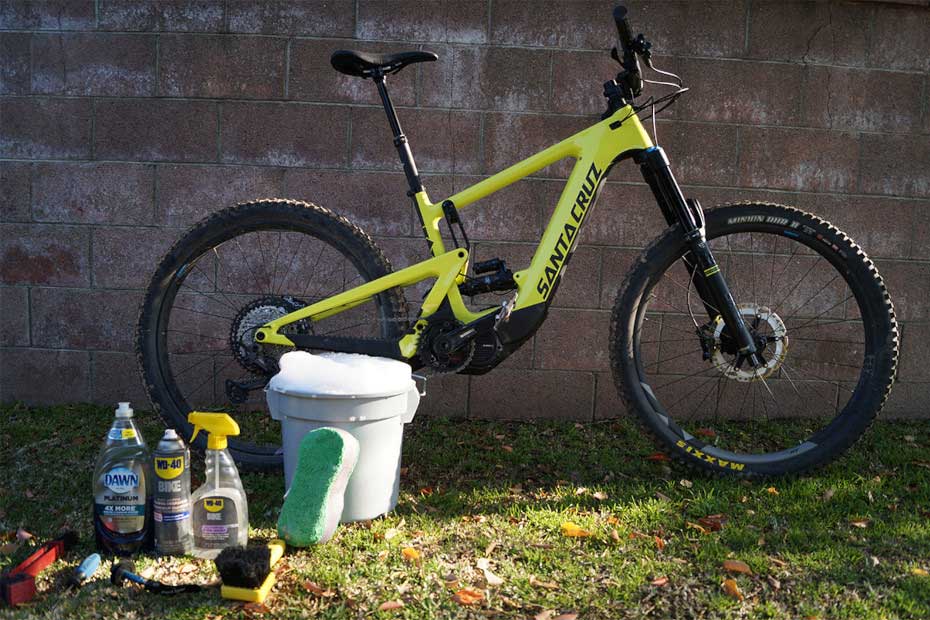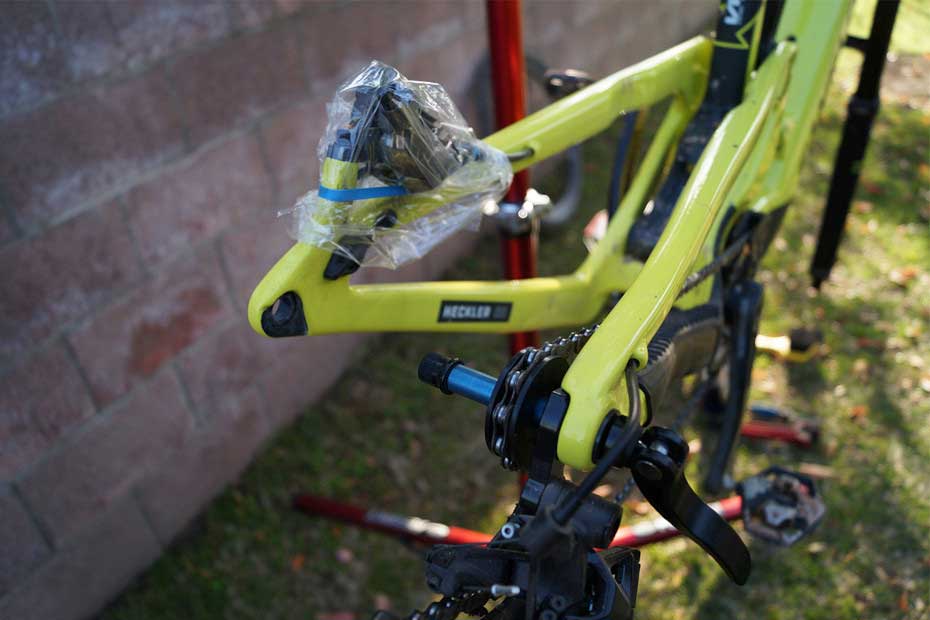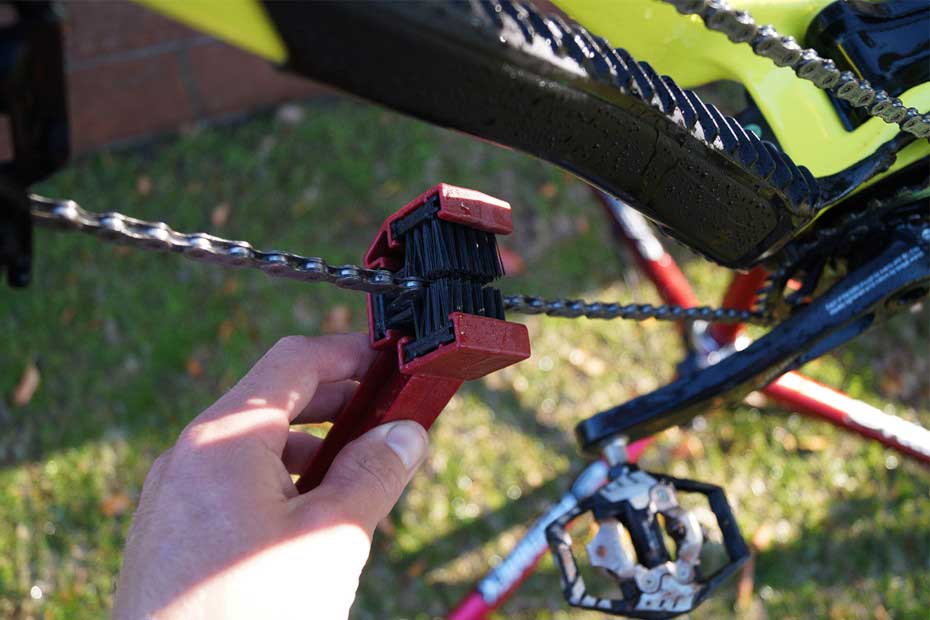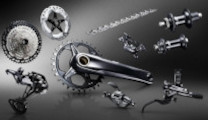
Washing your e-bike is something that both the frame manufacturer and Shimano will always recommend, done correctly that is. Keeping an e-bike clean is more than just getting dirt off the bike, it’s a way of checking for cracks, parts wear and help prolong the life of your bike. There are some misconceptions about how an e-bike should be properly washed and inside this article, there will be a detailed list on how the STEPS Team goes about it with the minimum tools.

Cleaning Checklist:
- Soap – Bike specific wash or Dawn soap
- Degreaser – Bike specific degreaser or diluted Simple Green
- Cleaning tools – Sponge and bristle brush
- Bucket – Minimum of 2 gallons
- Water – Pressurized if possible
- Micro fiber towel – Drying and cleaning bike
- Old towel – Cleaning drivetrain
- Small plastic bag – Covers brake calipers
- Repair stand – Shimano uses Feedback Sports
- Dummy Hub – Park Tool Dummy Hub

Prepping
1. First, start by putting your bike in the bike stand. For those that run a dropper post, you can clamp it to either the more significant, lower diameter tube or upper stanchion portion. If clamping to the stanchion, be sure to put a clean rag between the clamp and post to ensure it doesn’t get scratched.
2. Once the bike is placed securely in the stand, start by removing both wheels. Then install a dummy hub to allow the chain, derailleur, and chainring to be adequately cleaned. This system enables the user to still spin the cranks with the rear wheel being removed. If you do not have a dummy hub, always remove wheels.
3. Next, put a plastic bag over each brake caliper and secure it with a rubber band if needed. The bags will ensure no unwanted degreaser or bike wash contaminates the brake pads.
4. Put about a little bit (tablespoonish) of dawn soap at the bottom of the bucket. If there is access to hot water, this is the time to utilize it. Fill the bucket with water, but make sure there is high pressure initially to allow the soap to foam up. Hot water will help with the degreasing process but not necessary.
5. Make sure that the STEPS battery tether is placed securely, along with dummy plugs in any open head unit or drive unit port. This will ensure that no excess water gets into any unnecessary ports and help prolong the STEPS components.

Washing
6. Start by turning on the hose to low-pressure. E-bikes are designed to be ridden in almost all conditions, but eliminating pressure washing will help prolong all components of the bike. Give the bike a good rinse and get off all dusk, mud, etc. Spin the cranks a few rotations while aiming the water at the chain. Do the same for both wheels. The key areas to avoid high-pressure washing are hubs, pivot bearings, headset, seat tube, and all STEPS components.
7. Spray degreaser on the drivetrain while spinning the cranks to ensure the whole chain gets soaked. Do the same to rear cassette, but be extremely careful not to touch the rotor with any degreaser. Let this sit for a few minutes.
8. In the meantime, take your sponge and dip into the bike wash. Give your whole bike a good wash, while occasionally plunging back into the bucket. Avoid touching the drivetrain, while it's still degreasing. Tip – If using Dawn soap (not bike wash), wash your rotors with a clean sponge and water/dawn mix. This will help give you a little better brake bite for your next ride. Just be sure there is no contamination on your sponge or in Dawn wash mix.
9. Making your way back to your drivetrain, take the bristle brush and scrub the chain, cassette, chainring, and pulley wheels. All the extra gunk built up on the drivetrain will make your components wear out faster if not routinely.
10. Give your bike and drivetrain a rinse with low-pressure water.

Drying
11. Use dedicated drivetrain rag to clean the chain. Rotate cranks while holding on to the chain with the cloth. This process will help dry the chain and get off extra gunk. Use the rag to clean both sides of the chainring and pulley wheels.
12. Take clean microfiber rag and clean between fork stanchions and lowers. This is a commonplace that builds up debris and can wear on fork seals. Do the same to the rear shock.
13. Take microfiber rag and dry the frame, fork, wheels, and cockpit. Avoid touching the rotors.

Final Touches
14. Reinstall both wheels into bike.
15. Apply desired chain lube to the chain underneath the chainstay. Do this at a slow rate to make sure lube full gets in every moving part of the chain.
16. Take dirty cloth and wipe off all excess chain lube to help eliminate excess buildup.

Share this article





